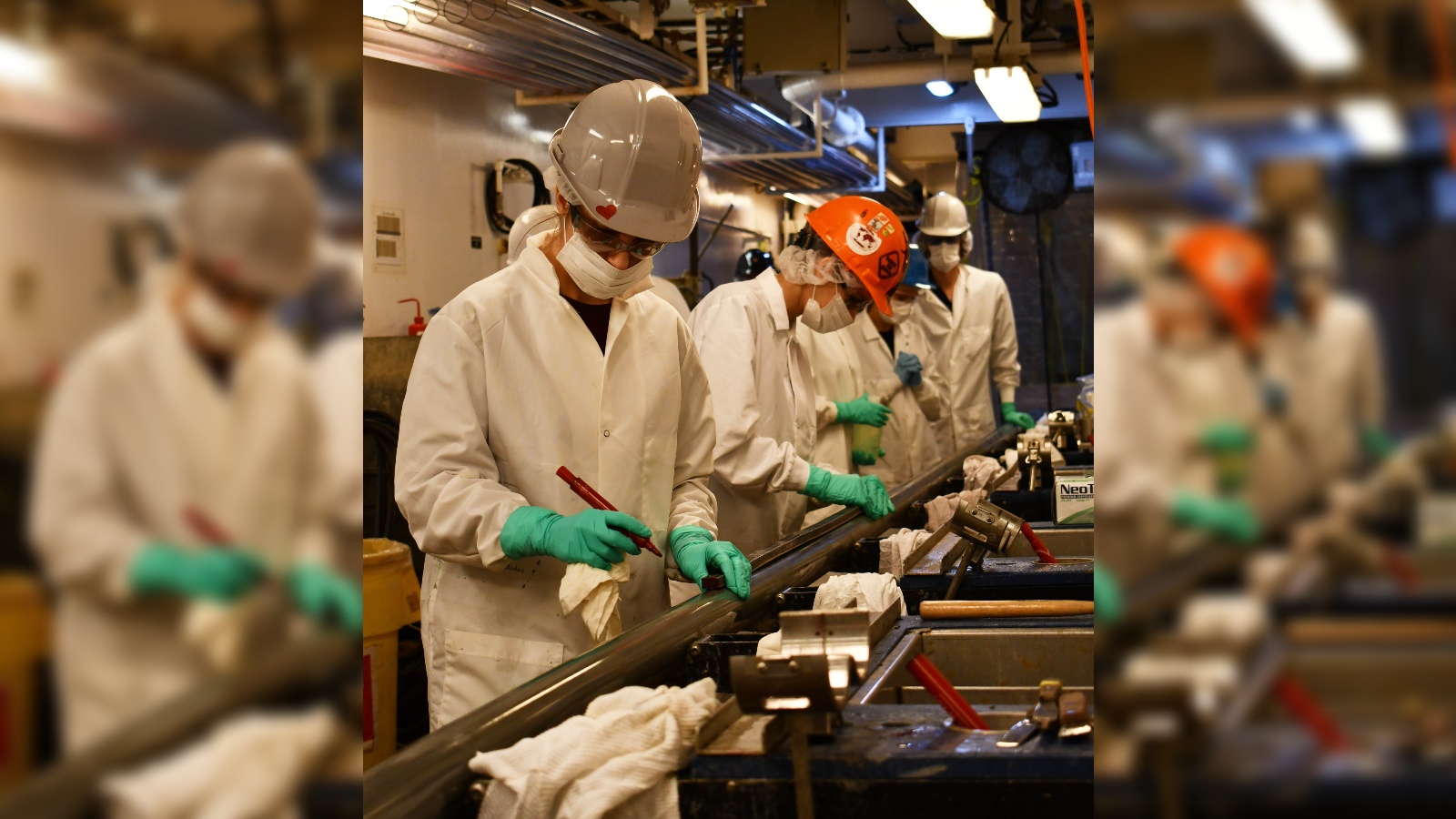Scientists discover 1 million-year-old DNA sample lurking beneath Antarctic seafloor
The ancient DNA sheds light on how the region's ecosystem could be impacted by climate change.
DNA from ancient microorganisms, some of which dates back to roughly 1 million years ago, has been discovered beneath the seafloor in Antarctica. The DNA is the oldest ever discovered from seafloor sediments, a new study shows.
Scientists accidentally collected the unusual genetic samples, known as sedimentary ancient DNA or sedaDNA, up to 584 feet (178 meters) beneath the seafloor as part of a 2019 survey led by the International Ocean Discovery Program in the Scotia Sea north of mainland Antarctica. In the new study, which was published online Oct. 2 in the journal Nature Communications, researchers analyzed the sedaDNA samples for the first time.
The team looked closely at damage patterns within the recovered DNA fragments to establish exactly how old they were. The oldest fragments clocked in at around 1 million years old. Until now, the oldest sedaDNA, which was found locked inside Arctic permafrost, dated to around 650,000 years ago, Science Alert reported.
"The fragments are the oldest authenticated marine sedaDNA discovered to date," study lead author Linda Armbrecht, a researcher at the Institute for Marine and Antarctic Studies at the University of Tasmania in Australia, said in a statement. The samples have been exceptionally well-preserved due to low temperatures, reduced oxygen concentrations and an absence of UV radiation, Armbrecht said.
Related: Discovery of 'hidden world' under Antarctic ice has scientists 'jumping for joy'
Scientists aren’t certain which species the oldest sedaDNA belongs to, although it is definitely from a eukaryote — meaning it comes from an animal, plant or fungi and not from a bacteria or virus.
However, a majority of the DNA samples belong to diatoms — a type of phytoplankton that still exists in the world's oceans today and forms the basis of most marine food webs.
Get the world’s most fascinating discoveries delivered straight to your inbox.
The sedaDNA record from the Scotia Sea shows that there was likely an explosion in the abundance of diatoms about 540,000 years ago, right around the time Earth was undergoing a natural warming phase. At this time, increased ice loss from Antarctica's ice sheet and rising ocean temperatures likely fueled rapid diatom growth and reproduction, researchers wrote in the paper.
Human-caused climate change will likely create similar conditions, the researchers wrote. The team believes it is imperative to learn more about how ecosystems changed during earlier warming periods to better understand how they will change again in the future.
"Antarctica is one of the most vulnerable regions to climate change on Earth, so studying this polar marine ecosystem's past and present responses to environmental change is a matter of urgency," Armbrecht said.

Harry is a U.K.-based senior staff writer at Live Science. He studied marine biology at the University of Exeter before training to become a journalist. He covers a wide range of topics including space exploration, planetary science, space weather, climate change, animal behavior and paleontology. His recent work on the solar maximum won "best space submission" at the 2024 Aerospace Media Awards and was shortlisted in the "top scoop" category at the NCTJ Awards for Excellence in 2023. He also writes Live Science's weekly Earth from space series.
 Live Science Plus
Live Science Plus







